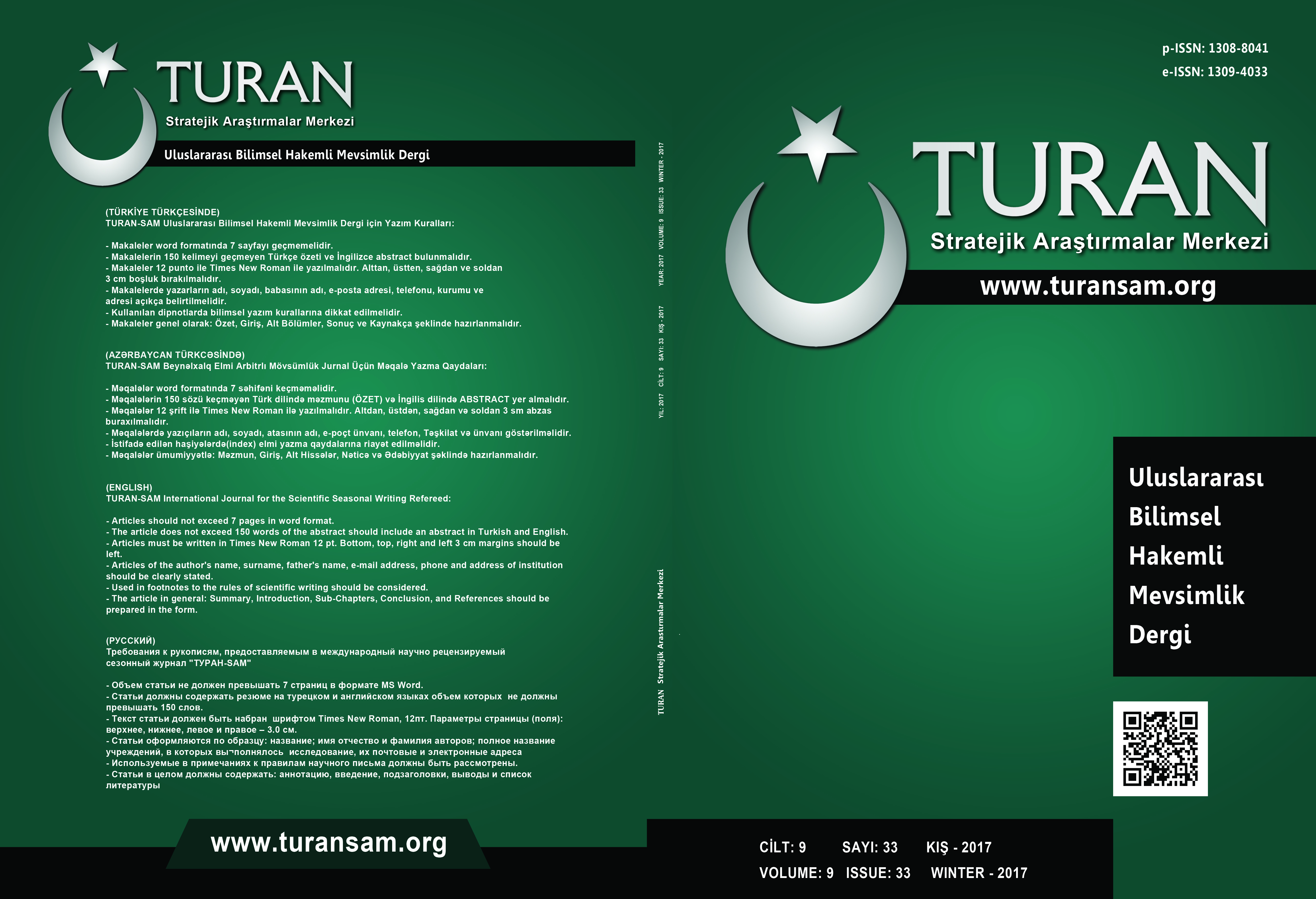Eski çağda çift başli kartal sembolü üzerine kisa bir değerlendirme (Mezopotamya, Anadolu, Orta Asya)
A brief evaluation on the double headed eagle symbol in the old age (Mesopotamia, Anatolia, Central Asia)
Author(s): Fazıl HimmetoğluSubject(s): Archaeology, Cultural history, Historical Geography, Semiology, Comparative history, Ancient World, Philosophy of Mind, Philosophy of Religion, Sociology of Culture
Published by: Sage Yayınları
Keywords: Double-headed eagle; Mesopotamia; Anatolia; Central Asia;
Summary/Abstract: It is obvious that the double-headed eagle phenomenon has a dualistic meaning. This dualism can be explained as east and west, sky and earth, or the world and beyond. However it is thought that this symbol is religious based. This bird motif appears in Mesopotamia, Anatolia and Central Asian (Turan) mythologies. It is probable that origin of this bird in Mesopotamia is lion-headed bird-bodied Anzu. This bird may be transformed to double-headed eagle in Assyrian culture after the Sumerians. This symbol is came by Assyrian merchants to Anatolia. The double-headed human-bodied an eagle figurines is found in the Central Asia. The eagle is İmportant in old Turkish culture. In fact, the legendary double headed eagle was believed to be the presence of Öksökö. Similarly it had respected to a legendary creatures called as Simurg in Iran geography. In this study, a short evaluation will be made about the double headed eagle symbol found in many cultures.
Journal: TURAN-SAM
- Issue Year: 9/2017
- Issue No: 33
- Page Range: 199-205
- Page Count: 7
- Language: Turkish

